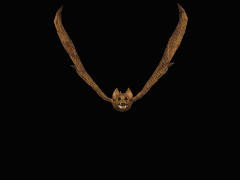


|
Coraciiformes:
The Coraciiformes are a group of usually colourful near passerine birds including the kingfishers, the Hoopoe, the bee-eaters, the rollers, and the hornbills. They generally have syndactyly, with three forward pointing toes. This is largely an Old World order, with the representation in the New World limited to 13 species of todies and motmots, and just six of the 84 kingfishers. Systematics:
This order has been seen to be something of a mixed assortment, and the Coraciiformes may be considered as including only the rollers. All the other families would then be considered to represent lineages of birds distantly related to Coraciiformes. Analysis of nuclear genes demonstrates that the Coraciiformes can be divided into a basal group that is not distantly related to the Piciformes, and a derived suborder containing mainly kingfishers (Johansson & Ericson, 2003). The Cuckoo Roller is only tentatively placed in this family nowadays; its true affinities appear to lie elsewhere. Several extinct families are only known from Paleogene fossils; they probably belong to the basal group and are sometimes difficult to assign because they were even closer still to the Piciformes (see also Neanis). In addition, there are some prehistoric genera which are likewise difficult to place into a family. At least one, the Late Eocene Geranopterus, is a primitive form, but modern families probably were already present by that time. |
